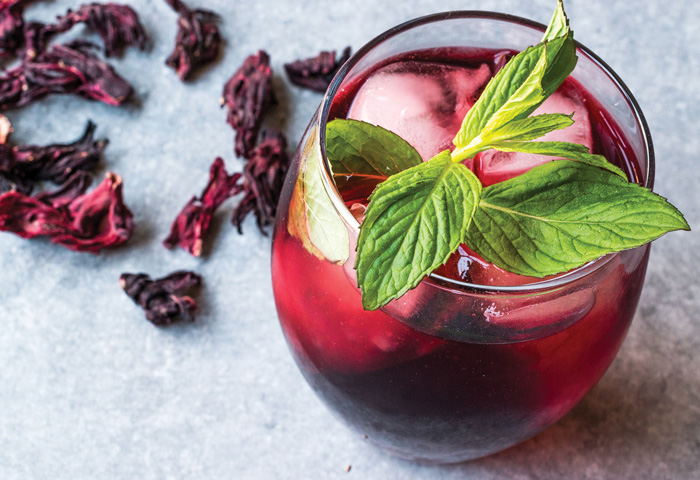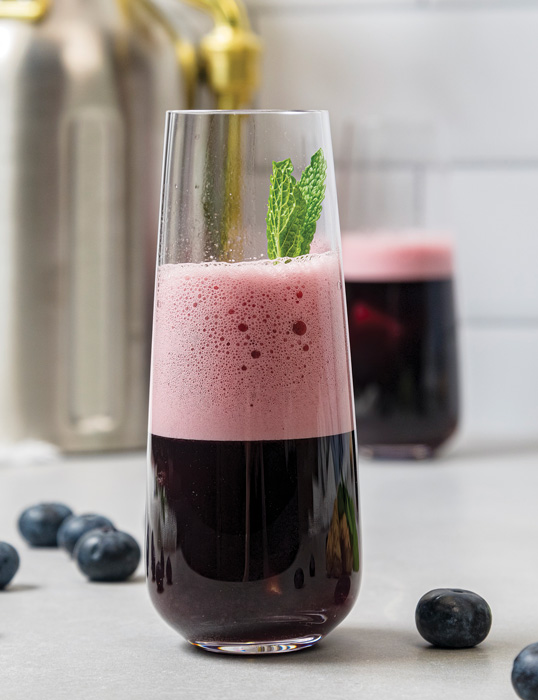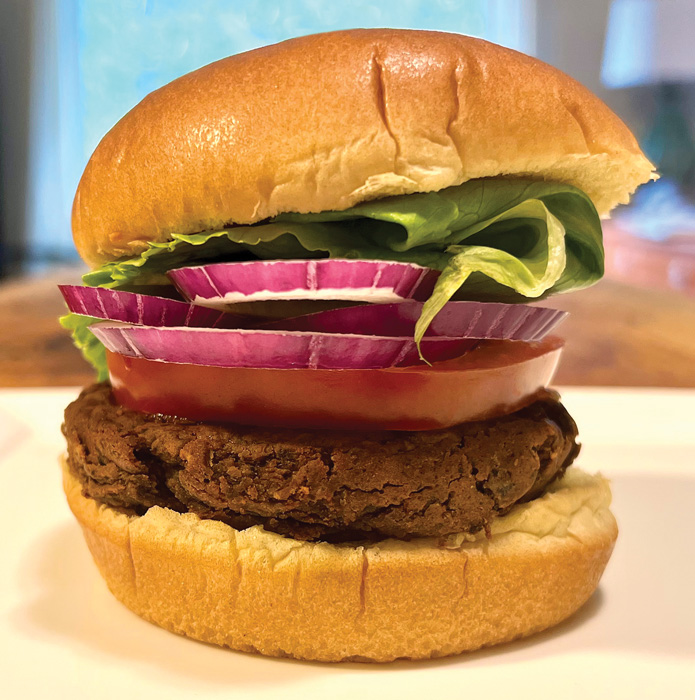
Top 5 Trends in Flavors and Ingredients
A team of Food Technology editors combed the IFT FIRST Expo floor looking for the latest flavor and ingredient innovations and found five top trends that are both familiar and forward-looking.
Article Content
Food and beverage manufacturers may have throttled product launches during the height of the COVID-19 pandemic, but if the array of new ingredients and flavors on display at IFT FIRST is any indication, the availability of some trendy new food and drink items is about to ramp up. During our editors’ visits to the IFT FIRST Food Expo floor, they found that the biggest trends in flavors and ingredients follow familiar themes, including health and wellness, sustainability, functionality, and plant-based foods. And yet, many of the latest essential product development components showcased in the exhibit hall offered some surprising twists on the familiar.
1: Holistic Health and Wellness
This mega-macro trend continues to evolve as consumers take a more holistic approach to health, nutrition, and well-being. Consumers are increasingly attuned to their own health and wellness, which today extends beyond traditional physical fitness to include mental and emotional health. Two strong micro trends–sugar reduction and personalization–were clear standouts among the innovative ingredients presented at the IFT FIRST Food Expo.
“COVID emphasized the need for consumers to manage health with foods and beverages,” said Carla Saunders, senior marketing manager at Cargill. “Sugar intake is one way they’re striving to better manage their overall wellness.”
A 2021 Cargill-sponsored study on sweetener claim impact found that sugar content remains a key influencer for America’s grocery shoppers, Saunders said, noting that about 62% of consumers reported they are likely to check the amount of sugar before purchasing a new product. Cargill’s newest sugar-reduction tool, EverSweet + ClearFlo, brings together a stevia sweetener with a natural flavor, providing benefits like flavor modification, improved solubility and stability in formulations, and faster dissolution.
“It allows you to use stevia where it couldn’t be used before,” said Saunders.
Sweegen, which introduced a new liquid stevia sweetener as part of its line of sugar-reducing products, has focused on sugar reduction based on consumer trends.
“Sugar reduction is the number one thing that people are going after,” said Sally Aaron, head of global marketing for Sweegen, noting that the company’s new ingredient format also is requested by its food and beverage processing customers. “Sometimes, there are facilities that have a hard time working with powdered ingredients, and so the liquid form makes it easy to work with in a variety of manufacturing settings,” she added.
Personalized health and nutrition, a constant trend within a trend in the health and wellness space, has always been about the fact that consumers want individualized food and beverage options that meet their dietary or nutritional needs, their culinary preferences, their price points, and so on. Today’s consumers are taking a more holistic approach to personalization, asking, “What makes me healthier? What makes me happier?”
The answers to those questions are as different as the individuals asking them, Alvaro Velasco, dairy category manager with Tate & Lyle, explained.
“I think we all want to eat what we think is good for us,” Alvaro said. “I think the next big thing is how we’re going to respond to people’s need for personalization of what they eat because one person wants 4 grams of fat, another likes high protein, another likes low sugar, etc. I think food companies, including ingredient and flavor manufacturers, are going to have to start thinking about our consumers wanting a greater degree of personalization and how our array of ingredients and solutions are going to have to accommodate [all those variables].”
2: From Clean to Clear Labels
The clean label movement, which promotes products with a few simple ingredients labeled with easy-to-understand language describing what is in or how the product is made, has been on trend for more than a decade. Today, said several IFT FIRST exhibitors, clear labels are the next big thing. This means complete transparency about what is contained in the product and straightforward labeling that does not hide chemicals or chemical-sounding ingredients under a “natural” moniker.
Juan de Dios Hernandez, CEO with Prosur, which makes functional ingredients from natural vegetable and fruit extracts for animal and plant-based proteins, notes that it is no longer enough for food manufacturers to offer clean-labeled products. Consumers today expect fully transparent, or clear, labels to better make informed choices about what they eat or feed their families, he said.
“We know that meat proteins plus nitrates plus cooking temperature results in nitrosamine development, and that the global scientific community agrees that nitrosamines cause colon cancer,” he explains. “That is true whether you are talking about synthetic or alternative naturally occurring nitrites such as celery or cherry powder. So, calling a meat product uncured because you’ve used a natural source of nitrite might be a clean label, but it isn’t a clear or transparent label.”
As regulations around the world change, it has become more important for companies to make their labels clear for consumers, adds Jordan Farmer, a scientist with Blue California. The company recently developed an alternative to titanium dioxide, a food pigment that is used to enhance a food’s white color or opacity. However, with new information about its environmental impact, some countries have restricted or even banned titanium dioxide based on data showing that it has negative environmental impact.
“We think that a lot of companies, even in the United States, are going to start switching away from titanium dioxide now that they’ve seen that it’s becoming less regulatory-friendly,” Farmer said. “We think (our alternative) will be a great option that people can look to when they want their food to look pretty, but for the consumer to understand what’s in their food.”
3: Multifunctional Ingredients
Food and beverage makers continue to look for ways to deliver a bigger functional punch to meet consumer demand, according to ingredient manufacturers at IFT FIRST. Ingredients or flavors that deliver more than one functional attribute per product can go a long way toward helping food and beverage manufacturers deliver on the benefits of other trends such as health, wellness, and sustainability. Multifunctional ingredients also give consumers the bang-for-your-buck products they want.
For example, recent consumer trend research by ADM revealed that 52% of consumers purchased probiotics in the past 12 months, and 63% of consumers prefer probiotics when incorporated into foods and beverages. These kinds of data support research and development of products like the tomato masala biotic snack bite featured at the company’s IFT FIRST booth, explained Brian Schwan, ADM’s vice president, category marketing, North America.
“This biotic snack contains plant protein, prebiotics, probiotics, and postbiotics, all in one product,” Schwan said. “It’s got a prebiotic fiber salt, which is a digestible fiber, our Deerland DE111 probiotic for immune and digestive health, and the BPL1 postbiotic for weight management and metabolic health. This is just one example showing how our work in the microbiome space plays out in product development and execution, and in alignment with consumer wants and needs.”
In some cases, multifunctional ingredients also ensure a product’s physical quality characteristics. Hilmar demonstrated that whey protein concentrate can be used to replace whole eggs in certain formulations and still maintain a desirable texture. Hilmar team members asked attendees to taste the difference in a pound cake comparison: one made with whole egg and the other with 100% replacement of egg with Hilmar 7000 Whey Protein Concentrate. Substituting whey protein provided a cost savings as well as a solution for when eggs are not desirable due to cost, availability, or allergen issues.
Several flavor companies also rolled out some multifunctional samples with a twist. Virginia Dare used its flavoring expertise in an Adaptogen Coffee Latte. Its natural coffee flavor, natural ginger flavor, and natural cinnamon spice flavor added a nostalgic taste to the latte made with oat milk and infused with an adaptogenic mushroom extract to boost energy, promote endurance, and support recovery. And Ajinomoto featured MSG in applications not normally associated with the flavor enhancer, including adding a savory nuanced flavor to vanilla ice cream and a balanced tropical fruit flavor in a seasonal citra and El Dorado hopped IPA made with rice milk, oats, and MSG.
4: Make It Sustainable
It’s no surprise that this macro trend continues to push food and beverage product innovation forward. Beyond minimizing environmental impacts, sustainability is a multifaceted promise to consumers, defined by a growing number of micro trends, including upcycling and social consciousness purchasing associated with human and animal welfare, food waste, and food security.
Ingredients upcycled from food waste and byproducts created during agricultural harvesting, production, or food processing were featured at several booths at IFT FIRST, including Ocean Spray’s Cranberry Seeds, a clean label product harvested from cranberries that can add natural color and nutrition with a neutral flavor to foods such as baked goods, smoothie blends, and snack bars.
“It’s a byproduct from the dried cranberry process. They’ve got all of the health benefits of the plant, you get that bright red color, and there’s no sugar at all,” said Dave Nickerson, senior manager of business development, Ocean Spray.
Lemnature Aquafarms introduced IFT FIRST attendees to two nutritional powders, one rich in protein and one rich in fiber, created by using a sustainable process involving the lemnaceae plant. According to Andrew Shultz, senior regional sales manager, “We’re talking a product that can be grown with no arable land, is net-neutral for water, and is full of micronutrients in a highly sustainable operation.”
Natural ingredients that help prevent food waste fit well into the sustainable macro trend and also can provide added benefits such as cost- and energy-savings for food processors, according to Brenda Zavala-Livengood, senior marketing specialist, Kemin Food Technologies North America. The company’s latest functional plant-based protein, Proteus V, creates a micro barrier that keeps in moisture and reduces the amount of oil that is absorbed into the product.
“We can apply this functional protein to any type of fried or breaded food, such as baked chicken nuggets, mozzarella sticks, or jalapeno poppers, for example, and get a 20% to 30% reduction in oil uptake,” she explains. “[This] has been very beneficial to manufacturers, who are using less oil and have less waste, so they’re not having to dispose of that product, which minimizes their costs.”
5: Plant-Based Power-Up
Just a few years ago, alternative animal and dairy proteins were considered a micro health and wellness trend relegated to the retailer’s vegetarian food section. Today, innovative plant-based dairy and animal protein products are trending macro-style, battling for market share as a consumer base of flexitarians, vegans, and vegetarians grows. The number of plant-based ingredient options on the show floor reflected the fast-paced growth of this category.
Ingredient and flavor makers at IFT FIRST agreed that food manufacturer and foodservice customers are actively looking for ingredients that allow them to create appealing products utilizing sustainable plant-based options—and capture new customer bases.
“Flexitarians are driving plant-based eating,” said Steve Gumeny, regional product manager with BENEO. “One in four consumers globally are interested in flexitarian diets.”
Gumeny noted that BENEO’s two new faba bean ingredients, a protein concentrate and a starch-rich flour, can help food makers find a foothold with flexitarians since the products have applications for vegetarian, meat, and plant-based foods. The faba bean ingredients provide innovative opportunities for texture improvement in meat and dairy alternatives as well as protein enrichment, Gumeny said, adding that the concentrate can replace animal proteins, such as milk and eggs, and soy protein in certain applications.
Some of the plant-based ingredient options on display took creativity—and functionality—up a notch. MYCO Technology featured its novel process of fermenting plant proteins with mushroom mycelia (roots). The company’s FermentIQ Protein is made by taking pea protein or a pea-and-rice protein blend and fermenting it with shiitake mushroom mycelium. A mushroom’s metabolism strips away excess carbohydrates, freeing up access to the protein while decreasing many of the undesirable attributes of the protein’s flavor and aroma. The ingredient was featured in riblet sliders, pea pancakes, and TXP sausage sticks. The combination, the company stated, improves flavor, aroma, digestibility, anti-nutrient content, solubility, and application functionality.
“It’s important that we continue to work on taste, flavor, texture, and overall sensory mimicking of analogue counterparts,” commented Jessa Friedrich, digital marketing manager with Edlong Flavors, noting that the dairy-based and dairy-free flavors featured at the company’s IFT FIRST booth were designed to improve the taste of today’s on-trend plant-based foods.
“A lot of our solutions are focused on masking, whether it’s plant-based proteins, or trying to create flavor balance inside of a product or application,” she said. “With plant-based proteins, there is a bigger focus on taste, and everyone from vegans to flexitarians wants to enjoy these products without sacrificing taste.”
With plant-based eating resonating throughout the expo floor, several flavor companies demonstrated their capabilities in flavor masking and flavor enhancing for plant-based foods and beverages. Synergy Flavors presented a Vegan Crab Dip Spread, featuring a natural savory masking flavor, natural lemon flavor, natural cheddar cheese flavor, and natural crab flavor. Ribose, a simple sugar normally used for sustained energy in beverage formulas, was featured in a plant-based slider by Bioenergy Life Science. The ingredient has a slightly sweet flavor profile and provides a browning/caramelizing effect and negative glycemic value. And Ingredion showcased a butterfly jasmine plant-based milk tea, a higher protein-and-fiber reduced-sugar beverage that included a combination of proprietary pea protein isolate, a system of hydrocolloids recommended for ready-to-drink plant-based protein beverages, and a stevia-based sweetener.






















.jpg?mw=500&hash=D1E2E8B94FED0CCA2F5CEA8243FD787B)
